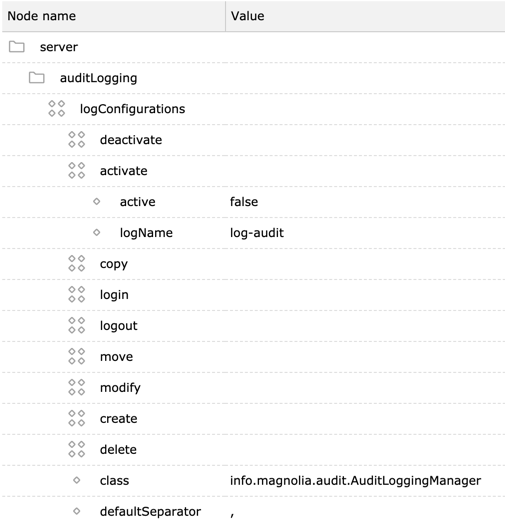Audit
Audit trail allows an administrator to record user activity in the system. An audit trail typically captures the who, what, when and where. The default implementation is based on Log4j 2 and the files used for logging can be configured to suit your requirements. Magnolia also provides a Log Viewer tool, located in the Tools menu, to visualize these and other log files.
Configuration
This feature is configured in two places, log4j2.xml file and in
auditLogging configuration.
log4j2.xml
Here you define the loggers to be used by the audit logging. Here is an
example extracted from the application log4j2.xml :
<RollingFile name="sync-log-audit"
fileName="${magnolia.logs.dir}/magnolia-audit.log"
filePattern="${magnolia.logs.dir}/magnolia-audit-%i.log"
append="true">
<PatternLayout pattern="%d{dd.MM.yyyy HH:mm:ss}%m%n"/>
<Policies>
<SizeBasedTriggeringPolicy size="1MB"/>
</Policies>
<DefaultRolloverStrategy max="5"/>
</RollingFile>
<Async name="log-audit">
<AppenderRef ref="sync-log-audit"/>
</Async>auditLogging configuration
Define the actions you want to log in auditLogging configuration. You
can enable the preconfigured actions and define which logger they should
use. Define separators for each action or use the default separator
(comma) for all of them.

Below is an extract of the output of the logs. The general pattern is
when, what, who and where.
20.10.2008 11:59:33 , create , superuser , website , /untitled4move and copy actions log the source node path and the destination
node path.
login action logs the IP address and the result.
21.10.2008 12:21:59, logout, anonymous
21.10.2008 12:22:05, login, superuser, 127.0.0.1, Success